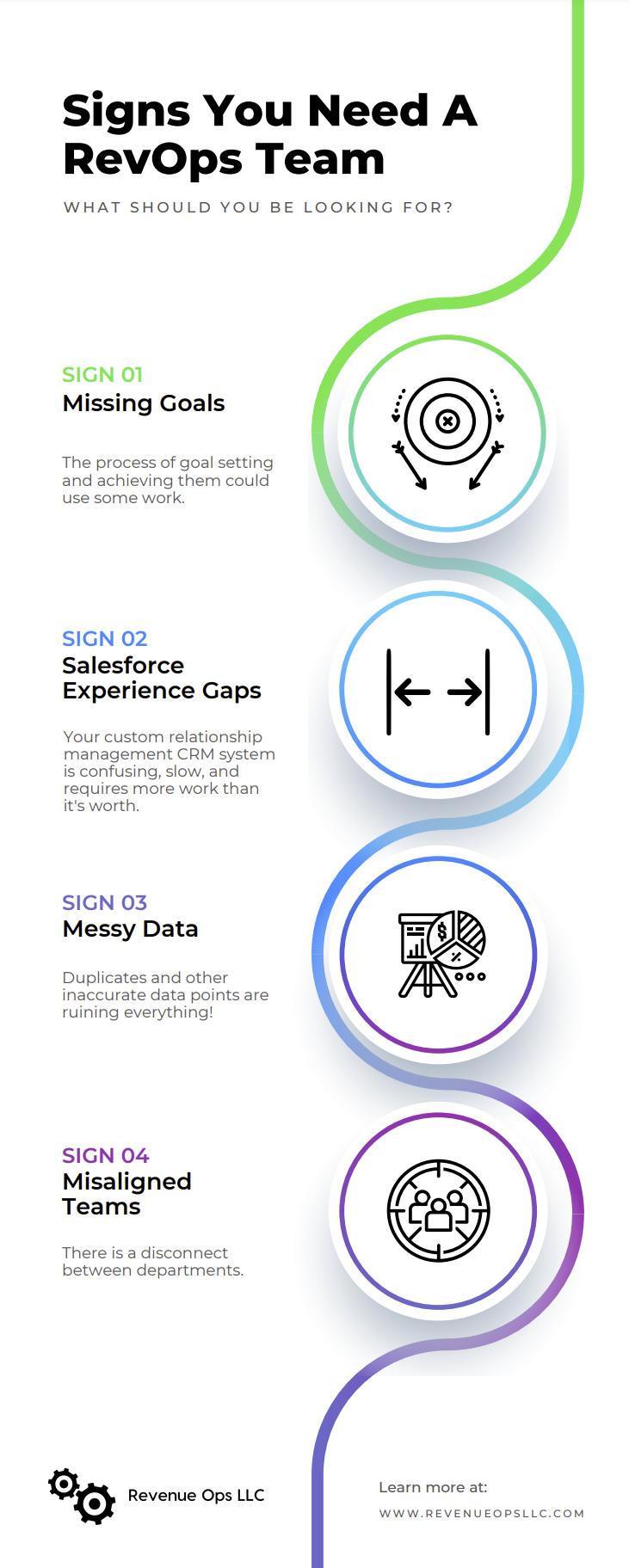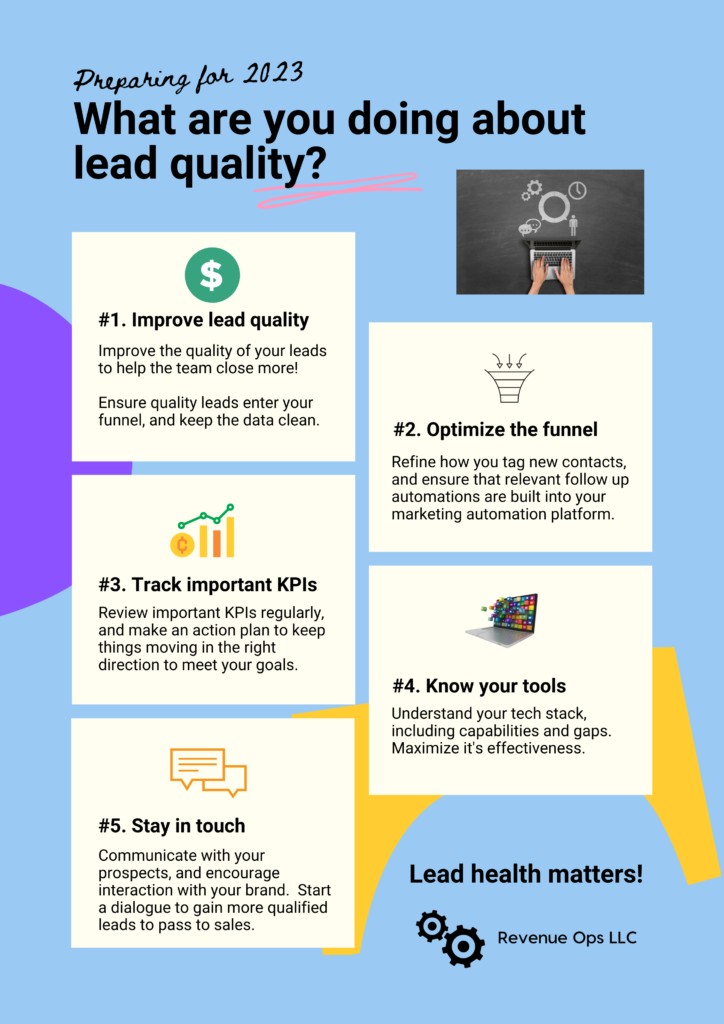Three Essential Steps to Prep for a Profitable New Year
- Ben Doran, Revenue Operations Consultant
These last twelve months have been action-packed with conflict, near and far, and an ever-changing business environment. On top of that, we have an economy that can’t seem to make up its mind, which adds to the stress of it all. While it’s understandable to hope for the new year to be better than the last, it isn’t always a given. A well-thought-out plan for your company’s 2024 growth is crucial, so we’ve put together three revenue operation steps to lead to a profitable new year.
Assess and Optimize Your Data Infrastructure
The foundation of effective revenue operations lies in data. It can unlock critical insights, allow businesses to react appropriately to customer needs, and steer an organization in the right direction. To capture, maintain, and use it effectively requires a healthy data infrastructure. So start by conducting a comprehensive audit of your current setup. Analyze the quality, accuracy, and integrity of your data. Identify any gaps or inconsistencies that are getting in the way of your operations. Evaluating where you currently stand will make the next step more manageable and beneficial.
Once you’ve examined your current data infrastructure, now is the time to make some improvements. The first thing you should consider implementing is a data hygiene process. These steps should target duplicate and incomplete data that get in the way of visualizing a complete and accurate picture of performance. It’s essential to ensure the information your business relies on is up-to-date and reliable. But don’t stop there; look into how your business can leverage advanced analytics tools to gain insights into customer behavior, market trends, and performance metrics. This data-driven approach will empower your team to make informed decisions and play an instrumental part in driving revenue growth in the upcoming year.
Evaluate Your Tech Stack
In our fast-paced world, staying ahead of the curve requires cutting-edge technology. It allows a business to run more effectively than competitors and creates growth opportunities, contributing to a profitable new year.
So what does this mean for you? Well, it starts with evaluating your current tech stack. Your CRM setup might have been state-of-the-art when it was originally implemented, but the technology evolves quickly. Perhaps the third-party integrations your business relies on are running on outdated or bulky systems. A thorough outline of the pros and cons of your current tech stack will give you a strong foundation for any potential upgrades you can make.
The investigation and collaboration phase will follow the tech stack evaluation process. Once you understand where your system currently stands, you can explore ways to enhance your operations with emerging technologies. Enhancement opportunities could look like artificial intelligence for predictive analytics or automation tools for streamlined workflows. When researching new tech, consider boosting efficiency while positioning your organization to adapt to changing market dynamics – flexibility is critical. It’s also important to note that you should take into account the cost of purchasing and implementing the new tech. You don’t want to focus on just the short term. Ideally, you’ll reap the benefits of your investment well into the future.
This process can get overwhelming, so collaborate with internal and external stakeholders. Your team leaders know how to prioritize system improvements, and revenue operations consultants have first-hand knowledge of the possibilities. It may sound like a lot of work, but at the end of the day, a well-optimized tech stack is a crucial driver of revenue operations success.
Align Revenue Operations and Business Goals
Most organizations have a clear set of profit-making goals they want to achieve each new year. It’s helpful to break down those goals by quarter and associate performance metrics with each because you need a clear direction to achieve great things.
But what about the role of revenue operations? Is there a detailed plan for how sales, marketing, customer experience, and finance will work together to reach the organization’s overall goals? If your team needs one, now is an excellent time to create one. Start by bringing in key stakeholders and mapping realistic action items for each department. This phase is an iterative process. You must regularly review and adjust these action items and strategies based on market trends and internal feedback.
This phase encourages cross-functional collaboration that breaks down silos and fosters a cohesive approach to revenue generation. When you align your revenue operations with broader business goals, you position your organization for a profitable new year.
Prepare for a Profitable New Year
As we embark on a new year, a comprehensive revenue operations strategy will set the stage for a prosperous future. Revenue Ops LLC can help you maximize your profit. Our certified experts will work with you to conduct a thorough data assessment, optimize your tech stack, and align operations with strategic business goals. Embrace these three essential steps, and watch your organization thrive no matter what lies ahead.
If you want to learn more or talk to one of our revenue operations specialists, please contact us today.



